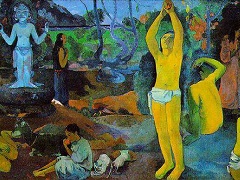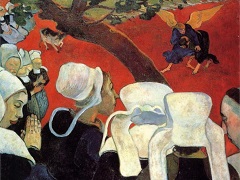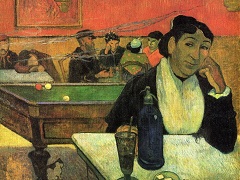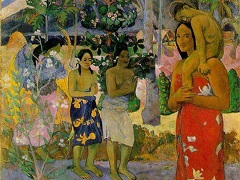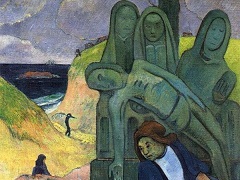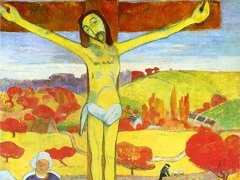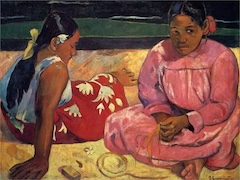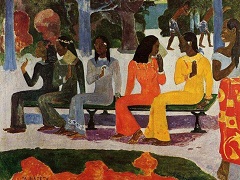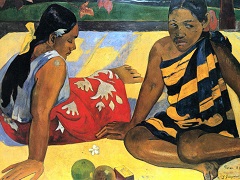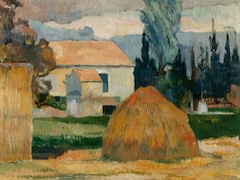The Painter of Sunflowers, 1888 by Paul Gauguin
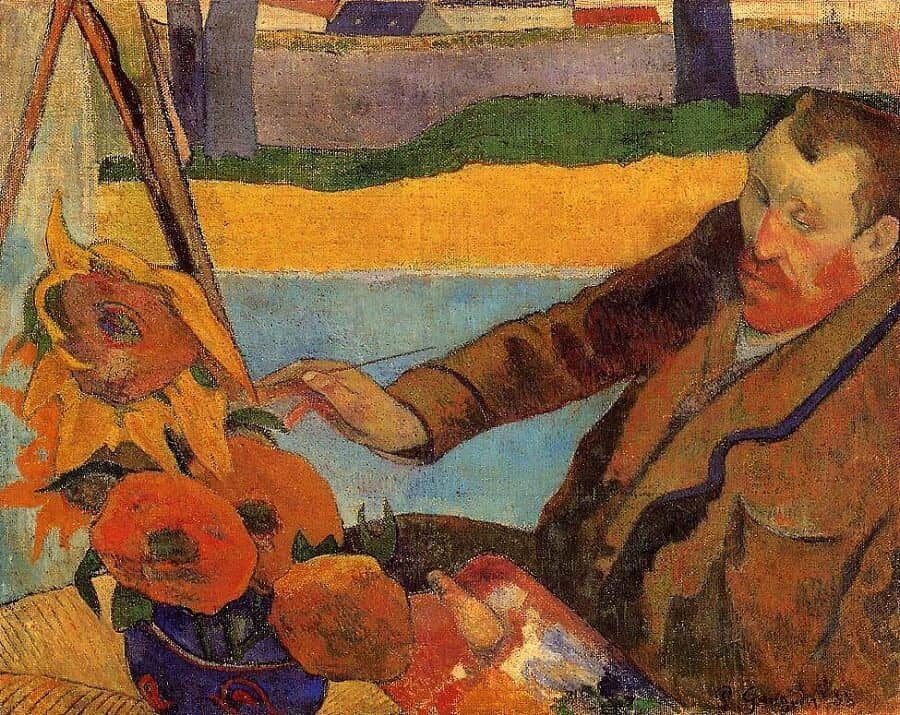
In November 1888, Paul Gauguin painted Vincent van Gogh in The Painter of Sunflowers'. The two had been living together in a yellow house in the small town of Arles in southern France. Van Gogh who had arrived in Arles first, painted a series of sunflowers to decorate the guest room in anticipation of Gauguin joining him. When Gauguin did arrive, he did indeed enjoy the paintings. After the two had parted ways, Gauguin wrote to Vincent requesting that he may keep one of the paintings, calling them a "perfect page of an essential 'Vincent' style."
In 'The Painter of Sunflowers', Gauguin shows Vincent at work in front of a canvas. Vincent is shown from the waist up with a painting pallet in his left hand a brush, making contact with the canvas, in his right. Gauguin places the painter to the edge of the canvas on the right his arm jutting across the picture. Opposite the figure is the canvas. Shown in profile, we see the easel and the edge of the canvas, but not the painting that Vincent is working on. In front of the canvas and easel, we see the vase full of sunflowers that Vincent was painting sitting on a small round table.
Gauguin'sThe Painter of Sunflowers shows the experimentation that he was doing with composition. Almost none of the subject, or what would be the traditional subject, takes place in the middle of the picture. Vincent, the canvas he paints, and the flowers are all pushed to the edges. Part of his head, his back, and most of his left arm are all outside of the picture plane. We look down on the scene from above creating a skewed perspective. His eyes look towards the canvas, drawing the 'The Painter of Sunflowers' by Paul Gauguinviewer along his arm to his hand holding the brush. This hand at work is the closest thing to the center of the canvas and can be seen as the true subject of the painting. While it is a portrait of Vincent van Gogh, it is a portrait of an artist. And, as an artist, his hands, the tools that manipulate the paint, are as important as anything. It is not a scene that took place in front of Gauguin as the flowers he shows were not in bloom this late in the season. It is a representation of who Vincent is more than a historical document of the day.
Being a portrait, it is a representation of a man in a specific time. By late November, tension was starting to develop between Gauguin and van Gogh. Two strong personalities living in such close quarters was taking its toll. Vincent especially was working at a feverish pace, producing paintings at a rate as high as anytime in his life. It was not long after this was painted that Vincent had one of his spells of madness, and the two parted ways never to see each other again. When van Gogh saw the painting, he wrote "My face has lit up after all a lot since, but it was indeed me, extremely tired and charged with electricity as I was then."
Despite how the two ended their time together, Gauguin always liked Vincent and especially his sunflower paintings. Showing Vincent painting sunflowers, Gauguin is showing the essence of van Gogh. Reflecting on his own work and his Sunflowers, Vincent said "I indeed, before others, have taken the sunflower." The sunflowers were painted for Gauguin with thoughts of the future in mind. They represent the start of something good, hope, and dreams coming to fruition. Gauguin knew this, and saw them as what was good in Van Gogh. Gauguin liked Van Gogh's painting of sunflowers so much he owned three of them. The Painter of Sunflowers is Gauguin's celebration of his friend and the amazing work he knew he was producing.

